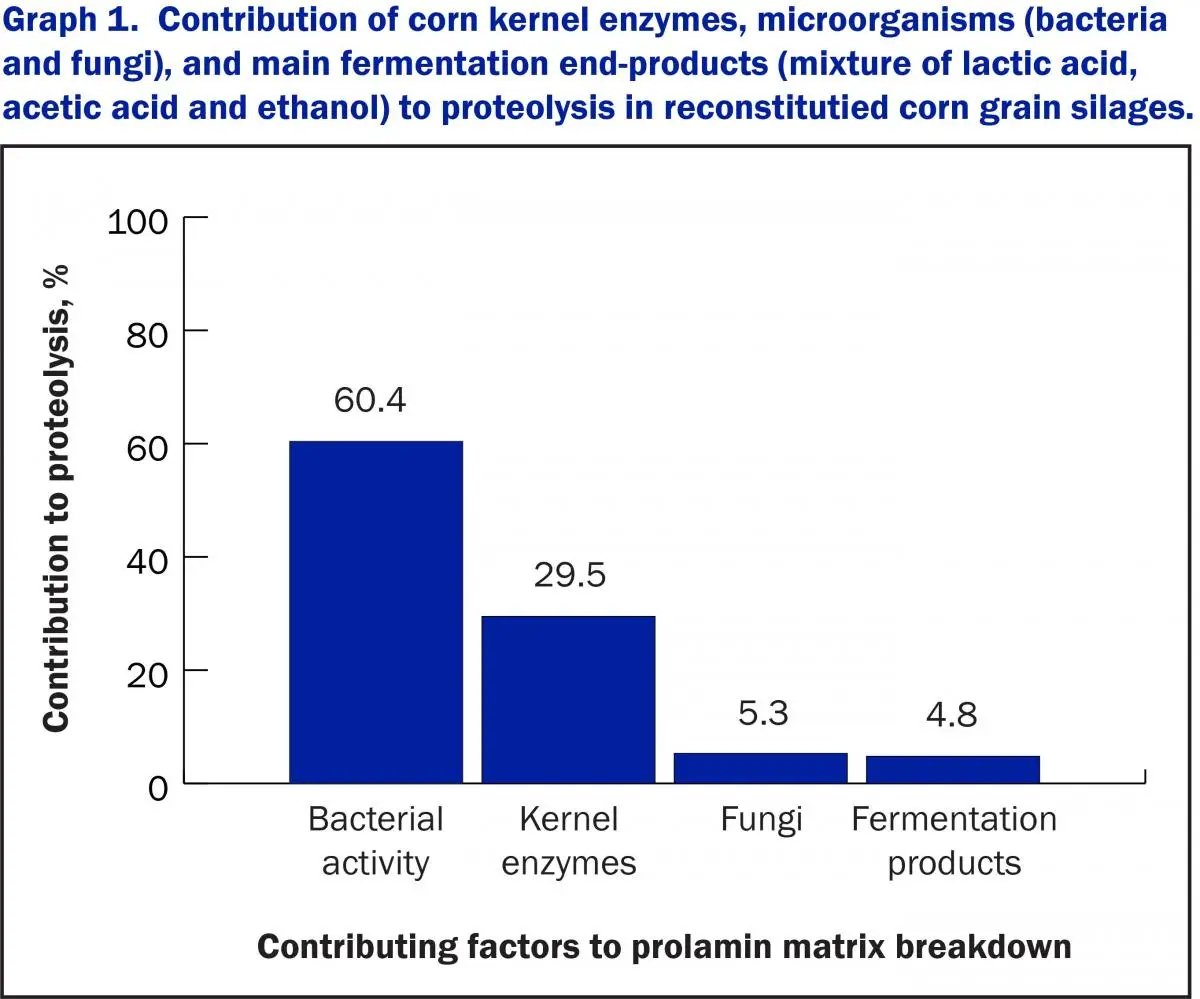
Want greater starch digestibility? Store it longer! – Dr. Michelle Windle, Vita Plus
 By Dr. Michelle Windle, Vita Plus forage products and dairy technical specialist
By Dr. Michelle Windle, Vita Plus forage products and dairy technical specialistThe dust is settling and the tires have been placed on top of the silo. Producers have almost recovered from the weeks-long diet of Mountain Dew®, beef jerky and cold pizza. The sealed silo may look peaceful during storage, but a lot more is going on than you think. One of the biggest changes that occurs in all fermented corn during storage is an increase in starch digestibility. In fact, recent research has found storage time is more impactful on starch digestibility than kernel processing.
What does an increase in starch digestibility look like to producers?
- In the fall, when switching cows from well-fermented feed with high starch digestibility onto feed that has not had sufficient time to ferment and low digestibility, cows do not often produce as well.
- During the summer, milk fat decreases because the starch is too digestible and it induces acidosis.
- Producers need to buy less corn because the starch is more digestible.
This phenomenon has only been studied in-depth within the last five years, and a recent article in the Journal of Dairy Science has shed light on the “how.”
In the corn kernel, starch granules are embedded in a waterproof matrix made of prolamin proteins. When cows eat corn, access to the starch by rumen bacteria is hindered by this protein matrix. However, this matrix is broken down during storage, causing the increase in starch digestibility commonly associated with increased lengths of storage.
Recent research investigated what exactly caused this increase in starch digestibility. Researchers ensiled corn kernels at 32 percent moisture that were either:
- Untreated
- Treated with an antifungal to kill the fungus, yeasts and molds so only the bacteria survive
- Irradiated to kill all microbial life
- Irradiated with fermentation acids (lactic acid, acetic acid, ethanol), in case the acids were dissolving the protein matrix during storage
You can see the results in graph 1 below. The research found bacterial activity contributed most to the prolamin breakdown followed by kernel enzymes, fungi and fermentation acids.

These results underscore the importance of promoting a healthy microenvironment for bacteria in the silo. One of the simplest, most effective ways to do this is to ensile at the proper moisture level, which is 32 to 35 percent dry matter (DM) for corn silage, 26 to 32 percent moisture for high moisture corn, and 35 to 38 percent moisture for snaplage. Minimizing oxygen in the silo helps drop pH, which limits the growth of undesirable microorganisms.
This research has important implications. Theoretically, future research could identify the most proteolytic strains of bacteria and an inoculant could be developed that would allow corn silage to be fed to animals with significantly less time of storage. Until then, proper carryover planning is crucial to make the most of the corn.
| Category: |
Forage Foundations Forage storage and management |

